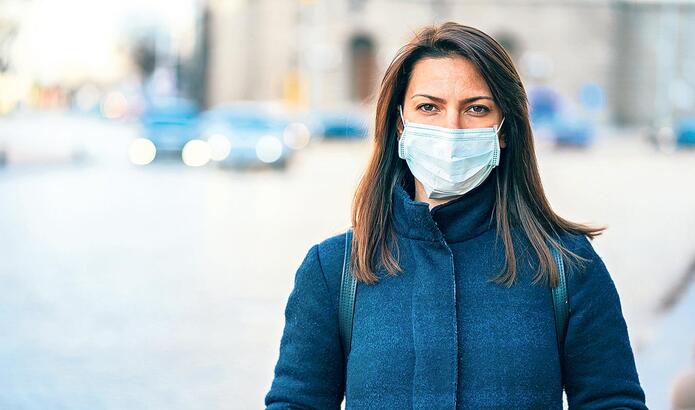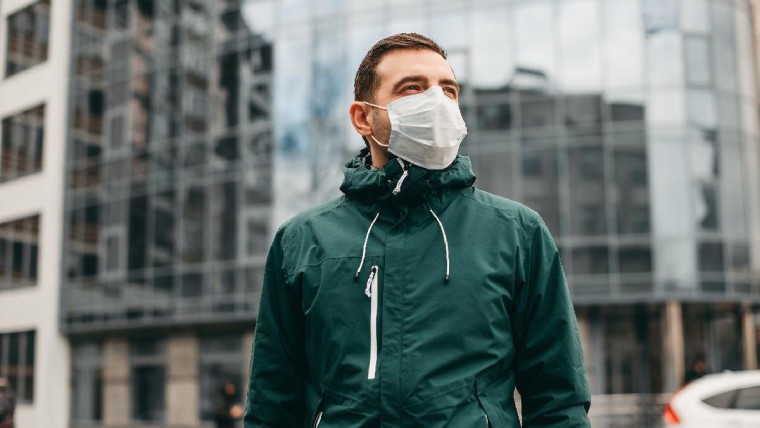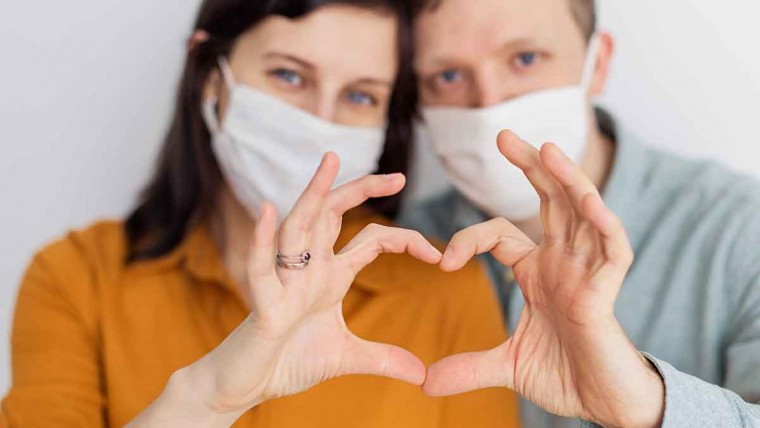1 – Which mask is how protective?
Surgical mask: The main feature of a good mask is that it has a filtering feature that does not allow particles and microorganisms inside and outside the mask, while easily passing the inhaled and exhaled air. A 2013 study by Cambridge University shows that single-use medical masks prevent the passage of even particles 5 times smaller than the Covid-19 virus by 89 percent.
N95 / N99 mask: These masks, also known as respirators, have a special filter system, and are primarily professional and especially needed by healthcare professionals due to their intense contact with patients and the medical procedures they perform. Until now, no national or international health institution, including the World Health Organization, has made a recommendation for us to wear such masks for protection from coronavirus in our daily life.
Homemade mask: Due to the intense interest in masks since the coronavirus was declared a pandemic, stocks were quickly depleted, mask prices skyrocketed. Thereupon, besides the voluntary sewn masks for healthcare professionals, making your own mask has become one of the trends of quarantine days. So much so that even the US Center for Disease and Control suggested different ways to make masks at home. However, all experts and leading health institutions warn: Wearing a mask, whether homemade or medical, is not enough to protect against coronavirus alone. It should be considered as a complementary measure, along with hand hygiene and social distancing.
2 – Ways to make masks at home (US Center for Disease and Control)
Stitched mask: Cut two pieces of fabric with side lengths of 15 cm and 25 cm. Put it on top of each other, fold the long sides half cm inside and sew them together, making it a two-folded piece. Sew the two short edges by bending about 1 cm over the washing tire, scrunchie or rubber band you have placed on it. Finally, sew from the four corners of the mask so that the fabric and rubber bond together to secure the elastic in the fabric. Here your mask is ready.
T-shirt mask: Cut the bottom of a shirt about 20 cm high to cover the front and back surfaces. Cut out a 16 cm long rectangular piece from one short edge of the fabric you have obtained, leaving two cm at the top and bottom. Cut the two cm pieces of the bottom and the top and separate them from each other. Place the fabric on your face and tie the upper pieces over your head and the lower pieces around your neck.
Instant mask: Cut the filter coffee paper horizontally in the middle and take the upper part. Place this filter in the middle of a square fabric or shawl. Cover the filter by folding the fabric from the top and bottom. Put scrunchies or rubber bands on both sides of the rectangular fabric you have obtained. Squeeze the parts on the sides by folding them towards the middle. Hold the elastic bands on both sides and place it on your face.
3 – Which materials should be used?
Working on medical textile products, High Textile Engineer Assoc. Dr. Muhammet Akaydın says that the type of fabric we use to make masks at home is important: “We have two basic expectations from a mask. First one; It has a texture that allows us to breathe comfortably, while ensuring that it filters viruses and bacteria in both environments, both from inside to outside and from outside to inside. The second is to prevent the growth of viruses or bacteria that are filtered and trapped on the surface of the fabric and, if possible, to destroy them. 100% cotton fabrics make it convenient for some viruses and bacteria to hold on the surface due to their natural structure and being suitable for moisture. On the other hand, in our scientific studies; We have seen that cotton woven fabrics with carbon fiber, cotton knitted fabrics containing a certain proportion of lycra (elastane), nano surfaces or nonwoven (non-woven) fabrics that meet the specified standards can provide good protection. We can say that polyester and similar synthetic fabrics contain less bacteria and viruses than fabrics containing 100% cotton. However, we must keep in mind that these materials are not reliable materials that can provide complete protection. ”
4 – 5 rules of wearing a mask (World Health Organization)
1- Before putting on the mask, wash your hands with soap or clean them with an alcohol-based disinfectant.
2- Wear the mask by holding the rubber on the sides so that it covers your mouth and nose. Make sure that there is no gap between your face and the mask.
3- Never touch the mask as long as it is on your face, if you do, wash your hands.
4- If the mask becomes damp, replace it with a new one immediately and do not wear the same mask a second time.
5- Without touching the mask, remove it by holding it from the rubber and throw it away immediately and close the cover. Then wash or disinfect your hands again.
5 – Where can we get it?
It is necessary to apply via e-government or ePTTAVM to obtain medical masks, which are prohibited for sale within the scope of coronavirus measures, free of charge. Five masks can be requested weekly for each person between the ages of 20-65 living at home. On application, the masks are delivered free of charge by PTT. In Istanbul, with the cooperation of the Ministry of Health and the Turkish Pharmacists Union, free masks are purchased from pharmacies through codes sent to people’s mobile phones. Within the scope of this application, every person between the ages of 20-65 is provided with 5 masks for 10 days.
Source: https://www.milliyet.com.tr/pazar/5-soruda-maske-6186159



